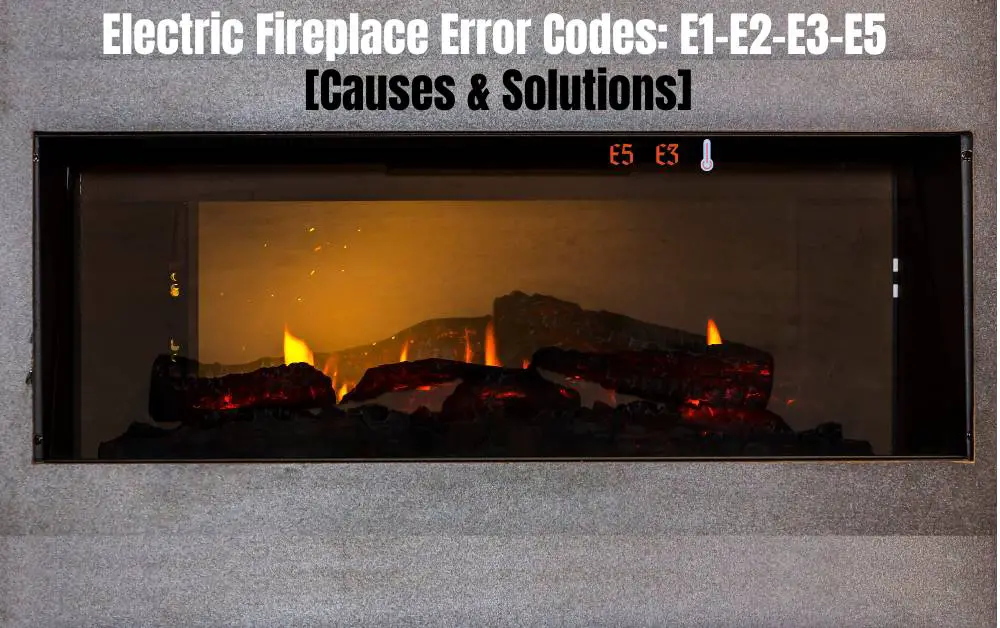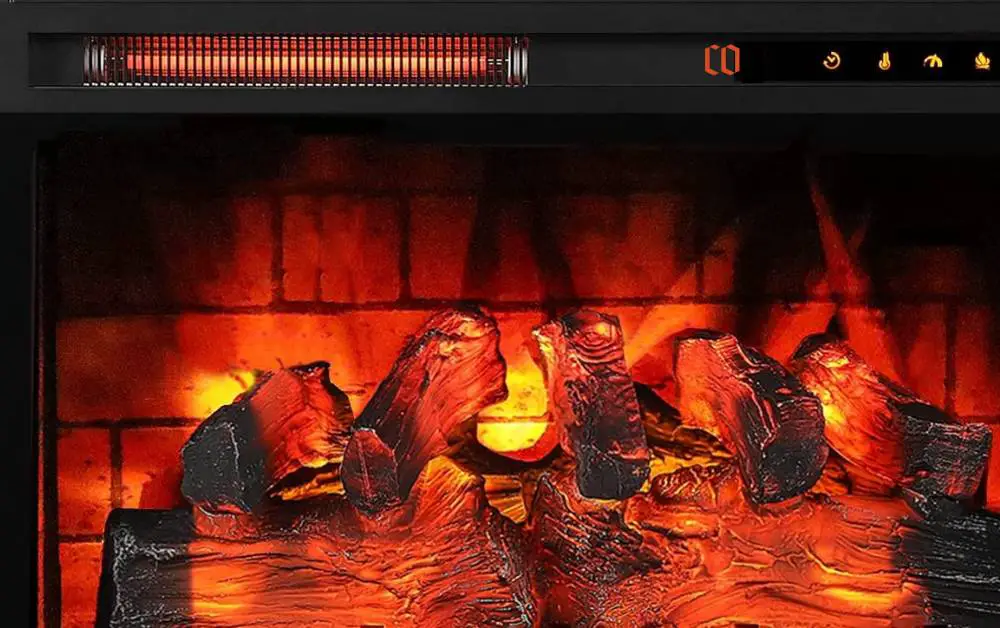People remove electric fireplace inserts for various reasons. Maybe your unit has stopped working, and repair costs outweigh replacement. Perhaps you’re remodeling your living room and want to swap it out for a more modern design. In some cases, homeowners want to return the wall or mantel space to its original use. Regardless of the reason, removing an electric fireplace insert requires careful planning, attention to safety, and the right tools.
The process might sound intimidating, especially if you’ve never worked with electrical appliances beyond plugging them in. However, with a step-by-step approach, anyone with basic DIY skills can remove an electric fireplace insert without causing damage to the unit, the wall, or themselves. The key lies in preparation—understanding your type of fireplace, disconnecting the power supply properly, and being careful during removal.
In this guide, we’ll walk you through everything you need to know about safely removing your electric fireplace insert. From gathering the necessary tools and safety gear to handling electrical connections and repurposing the unit afterward, you’ll find a detailed roadmap that makes the process simple and stress-free.
Tools and Safety Precautions
Like any home improvement project, removing an electric fireplace insert is much easier if you’re well-prepared. Having the right tools and safety equipment ensures the process goes smoothly and reduces the risk of accidents.
Essential Tools You’ll Need:
- Screwdriver set (both flathead and Phillips)
- Adjustable wrench or pliers
- Drill (if screws are difficult to remove)
- Flashlight or work light
- Tape measure (useful if replacing with a new unit)
- Pry bar (if trim or mantel is tightly secured)
Electrical Safety Tips:
Working with electrical appliances always carries risks, so it’s crucial to follow safety guidelines. Start by unplugging the unit if it’s a plug-in model.
For hardwired inserts, you’ll need to shut off the breaker that powers the fireplace. Never assume the unit is safe to handle without double-checking the power source. A non-contact voltage tester is an excellent tool to confirm that no electricity is flowing before you begin working.
Protective Gear for Safe Removal:
It’s always better to be safe than sorry. Equip yourself with work gloves to protect against sharp edges, safety goggles to shield your eyes from dust or debris, and sturdy footwear in case the unit slips while you’re handling it. If the fireplace is installed in a wall, there may also be insulation, drywall dust, or loose debris inside the opening. Wearing a dust mask is a smart precaution.
By preparing the right tools and prioritizing safety, you’ll avoid unnecessary damage to both the unit and yourself.
Preparing the Fireplace for Removal
Now that you have your tools and safety gear, it’s time to prepare the fireplace for removal. This step is crucial because skipping it often leads to complications halfway through the process.
The first thing you should do is disconnect the power supply. If your unit plugs into an outlet, simply unplug it. If it’s hardwired, locate your home’s breaker panel and switch off the breaker that powers the fireplace. Test the unit to ensure it’s completely off before proceeding.
Next, clear the surrounding area. Move furniture, decorations, or rugs away from the workspace to create a safe and open area. This not only prevents damage to your belongings but also gives you more room to maneuver the insert once it’s ready to come out.
Once the area is cleared, examine the fireplace insert carefully. Look for screws, brackets, or mounting hardware that may be securing it in place. Many inserts come with a trim kit or decorative surround that hides these fasteners. If that’s the case, you’ll need to gently remove the trim before accessing the actual mounting hardware. A pry bar or flathead screwdriver works well for this, but be careful not to damage the trim if you plan on reusing it.
By ensuring the area is safe, clear, and properly inspected, you set yourself up for a smooth and straightforward removal process.
How to Remove Electric Fireplace Insert
- Step 1: Power Down and Disconnect Electricity
- Step 2: Remove Trim, Mantel, or Framing if Necessary
- Step 3: Unscrew Mounting Brackets or Securing Hardware
- Step 4: Carefully Slide Out the Insert
- Step 5: Inspect the Opening for Damage or Repairs Needed
With all preparations in place, it’s time to move on to the actual removal process. Follow these steps carefully to ensure safe and successful removal:
Step 1: Power Down and Disconnect Electricity
Double-check that the power is completely off. If it’s a plug-in model, remove the plug. For hardwired models, confirm with a voltage tester that no electricity is running through the wires.
Step 2: Remove Trim, Mantel, or Framing if Necessary
If your insert has decorative trim or a mantel, remove these first. They often hide screws or brackets that secure the unit. Use a screwdriver or pry bar carefully to avoid damage.
Step 3: Unscrew Mounting Brackets or Securing Hardware
Locate and remove all screws or mounting brackets holding the unit in place. Keep the screws organized in case you need them later for a new installation.
Step 4: Carefully Slide Out the Insert
With all hardware removed, gently pull the insert out of its cavity. Some units are heavy, so having a second person to help lift is a good idea. Take your time and avoid forcing the unit, as this can cause damage to both the fireplace and surrounding wall.
Step 5: Inspect the Opening for Damage or Repairs Needed
Once the insert is out, check the opening for any signs of damage. Look for cracks, dust buildup, or exposed wires. This is a great opportunity to clean the space and make any necessary repairs before installing a new unit or sealing the area.
Following this step-by-step method ensures that your removal is safe, efficient, and stress-free.
Handling Electrical Connections
One of the trickiest parts of removing an electric fireplace insert is dealing with the electrical connections—especially if your unit is hardwired rather than plug-in. If you’re working with a plug-in model, you’re in luck. Once you’ve unplugged it, you’re essentially done with the electrical side of things. But for hardwired models, it’s a different story.
First, make sure the breaker is switched off before you do anything. Don’t just rely on flipping the switch on the unit; the only way to guarantee safety is to cut off power from the breaker panel. After doing so, use a non-contact voltage tester to confirm that no electricity is flowing.
When you open the access panel on the back or underside of the fireplace, you’ll usually see wires connected with wire nuts. These are typically black (hot), white (neutral), and green or bare copper (ground). Before disconnecting, it’s a good idea to take a picture with your phone so you’ll know how to reconnect things if you install a new unit later.
To disconnect the wires, gently twist off the wire nuts and separate the connections. Once the wires are free, cap each one individually with new wire nuts to prevent accidental contact. Tuck them neatly back into the junction box. If you’re uncomfortable working with live wires—even after turning off the breaker—it’s always safer to call an electrician.
Keep in mind: some inserts might also be connected to wall switches or thermostats. These additional connections should be handled carefully, as they can complicate the removal process. In those cases, professional assistance may save you time, frustration, and potential hazards.
The bottom line? If your insert is plug-in, you’re fine doing it yourself. If it’s hardwired, know your limits. Sometimes calling in a pro is the smartest—and safest—choice.
What to Do After Removing the Insert
Once the fireplace insert has been successfully removed, you’re left with an open cavity that needs some attention. What you do next depends on your goals. Are you replacing the unit with a new fireplace insert, or are you planning to repurpose the space for something else entirely?
If you’re installing a new insert, now is the time to clean and prepare the opening. Vacuum up dust, dirt, or insulation that may have settled behind the unit. Wipe down surfaces to ensure there’s no grime or soot-like residue left behind. This helps create a clean environment for your new installation.
If you’re not replacing the unit immediately, you’ll want to make sure the cavity is safe and secure. That might mean covering exposed wires with proper electrical caps (if it was hardwired) and sealing the opening to prevent drafts. Some homeowners choose to turn the empty space into a decorative alcove for candles, plants, or shelves. Others may drywall over the opening to restore a seamless wall appearance.
For those planning a full remodel, removing the insert gives you the chance to update the surrounding structure. Maybe your mantel looks outdated and you want to upgrade it, or perhaps you’d like to replace the fireplace area with built-in cabinets or a media console.
Don’t skip the inspection step, either. Look for signs of wear, moisture damage, or even pests that may have been hiding behind the insert. Addressing these issues now will save you bigger headaches down the road.
So, after removal, think of the cavity not just as an empty hole—but as a blank canvas. Whether you’re swapping in a sleek, modern insert or reimagining the space completely, this stage is where creativity and planning come into play.
Common Mistakes to Avoid
Like most DIY projects, removing an electric fireplace insert has its fair share of pitfalls. Learning about common mistakes ahead of time can save you money, time, and even personal injury.
One of the biggest mistakes homeowners make is forgetting to shut off the power. It sounds obvious, but in the rush to get started, people often assume unplugging the unit is enough—or worse, forget entirely when dealing with hardwired models. This is dangerous and could result in electric shock. Always double-check the breaker before touching any wires.
Another mistake is forcing the insert out of the cavity. Many inserts are snugly fit, and over time, they can settle into place. If screws or brackets are still holding it, pulling too hard can damage the unit, surrounding wall, or mantel. Instead, be patient. Take the time to locate and remove all fasteners before attempting to slide it out.
A third common issue is ignoring electrical safety after disconnecting wires. Once you separate the wires, they must be properly capped. Leaving them exposed, even if the breaker is off, poses a risk for future electrical problems.
Some homeowners also make the mistake of discarding trim or screws too quickly. Even if you don’t plan on reusing them, it’s wise to keep all parts in a labeled bag until your new unit is securely installed. You never know when you’ll need a spare screw or a piece of trim for a quick fix.
Lastly, many people fail to inspect the cavity afterward. Just because the insert is gone doesn’t mean the job is finished. Neglecting to clean or check for damage means you could end up installing a new unit in a compromised space.
Avoiding these mistakes isn’t difficult—it just requires patience, attention to detail, and a focus on safety.
When to Seek Professional Help
DIY removal is possible for many homeowners, but there are situations where calling in a professional is the smarter choice. Knowing when to seek expert help can prevent unnecessary damage or injury.
If your fireplace insert is hardwired into your home’s electrical system, and you’re not confident in handling electrical connections, it’s best to hire an electrician. Professionals have the tools and expertise to safely disconnect and secure wiring, ensuring your home remains safe from electrical hazards.
Another time to call for help is when the insert is structurally secured in a way that makes removal complicated. Some built-in models are surrounded by custom carpentry or heavy stone mantels that require specialized tools to dismantle without causing damage. Professionals with experience in fireplace installations can handle these challenges without tearing up your living space.
Weight is another factor. Electric fireplace inserts can be surprisingly heavy, and attempting to remove one alone can lead to injury or damage to your floors. If the unit is large or awkward to move, hiring movers or at least getting a second set of hands is highly recommended.
Finally, if you’re planning to replace the insert with a new model, professional installation may save you time and ensure everything is up to code. An incorrectly installed fireplace could trip breakers, fail to heat properly, or even become a fire hazard.
In short: if you’re uncertain at any point during the removal process, or if you encounter unexpected obstacles, calling a professional is not a failure—it’s the safest and most efficient option.
You May Also Like To Read:
FAQs
Can I remove an electric fireplace insert by myself?
Yes, most plug-in models can be safely removed by homeowners with basic DIY skills. However, if the unit is hardwired into your home’s electrical system, professional help is recommended.
Do I need to shut off the breaker before removing it?
Absolutely. For plug-in models, unplugging is enough. But for hardwired units, you must shut off the breaker and confirm with a voltage tester that no electricity is flowing.
How heavy are electric fireplace inserts?
The weight varies depending on size and design. Some small inserts weigh as little as 30 pounds, while larger models can exceed 100 pounds. It’s wise to have a second person help with lifting.
Can I reuse the old insert elsewhere?
If the unit still works, you can reuse it in another room with a proper cavity and power source. Alternatively, you can sell or donate it.
Is it safe to install a new insert immediately after removal?
Yes, as long as the cavity is clean, safe, and properly prepared. If electrical connections are involved, double-check them—or better yet, have an electrician handle the wiring before installing the new unit.
Affiliate Disclosure: Fireplaceadviser.com is a participant in the Amazon Services LLC Associates Program. We may earn a commission when you click on certain links on this site and purchase.

Hello!! I am Jamal Khan. I often fix my home electric heaters and gas stove problems and research the common issues in the heating units to improve my knowledge and expertise. The aim of establishing fireplaceadviser.com is to share my expertise and knowledge with my audience.












